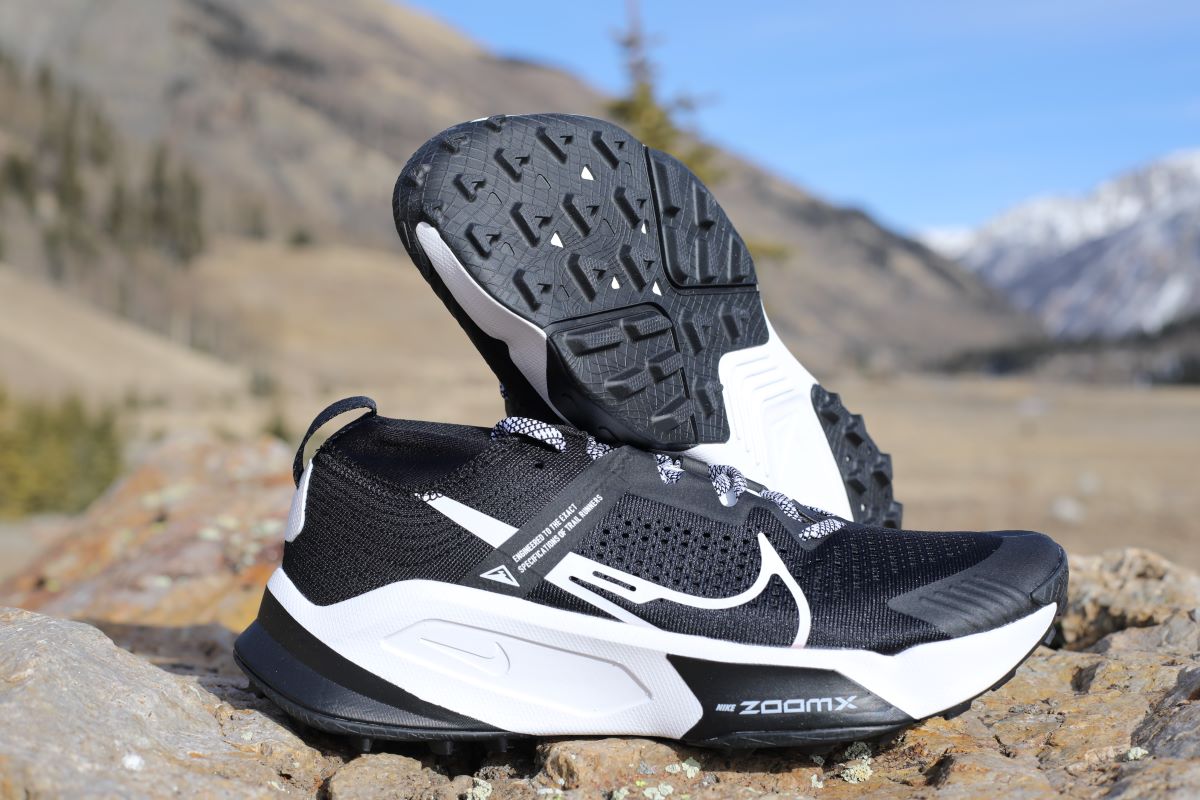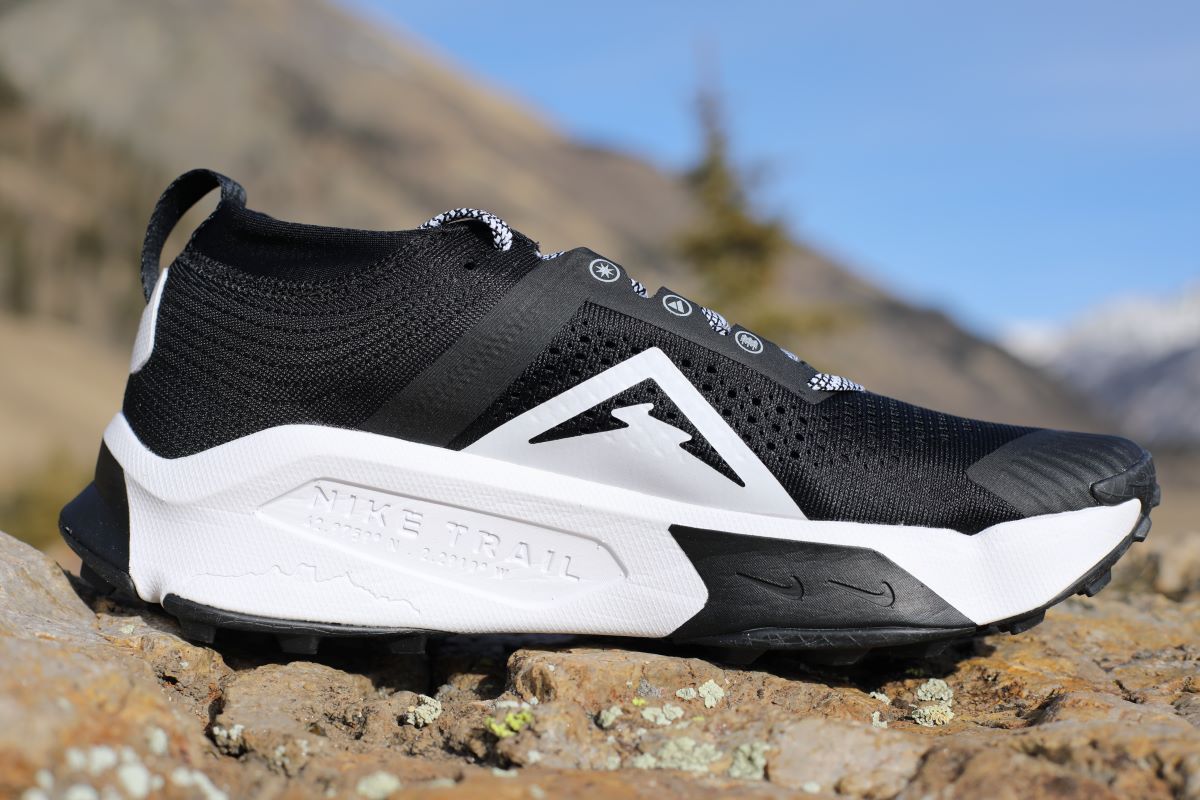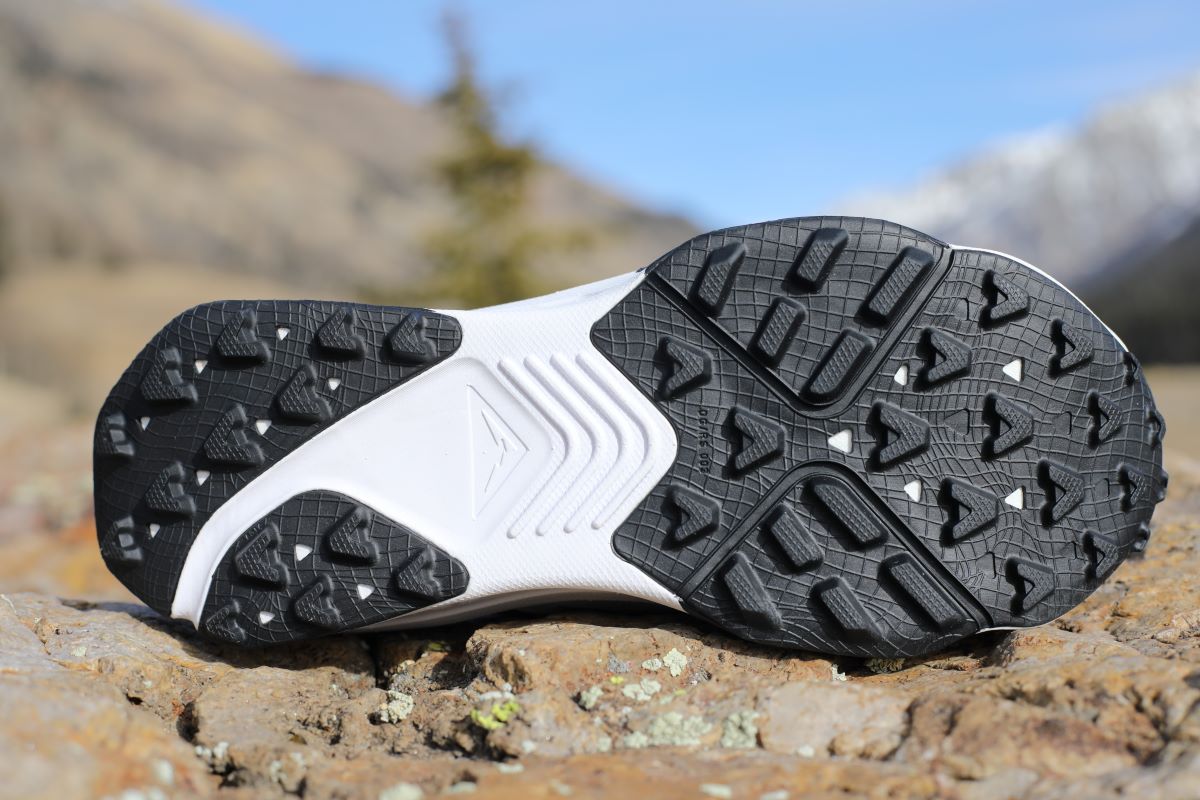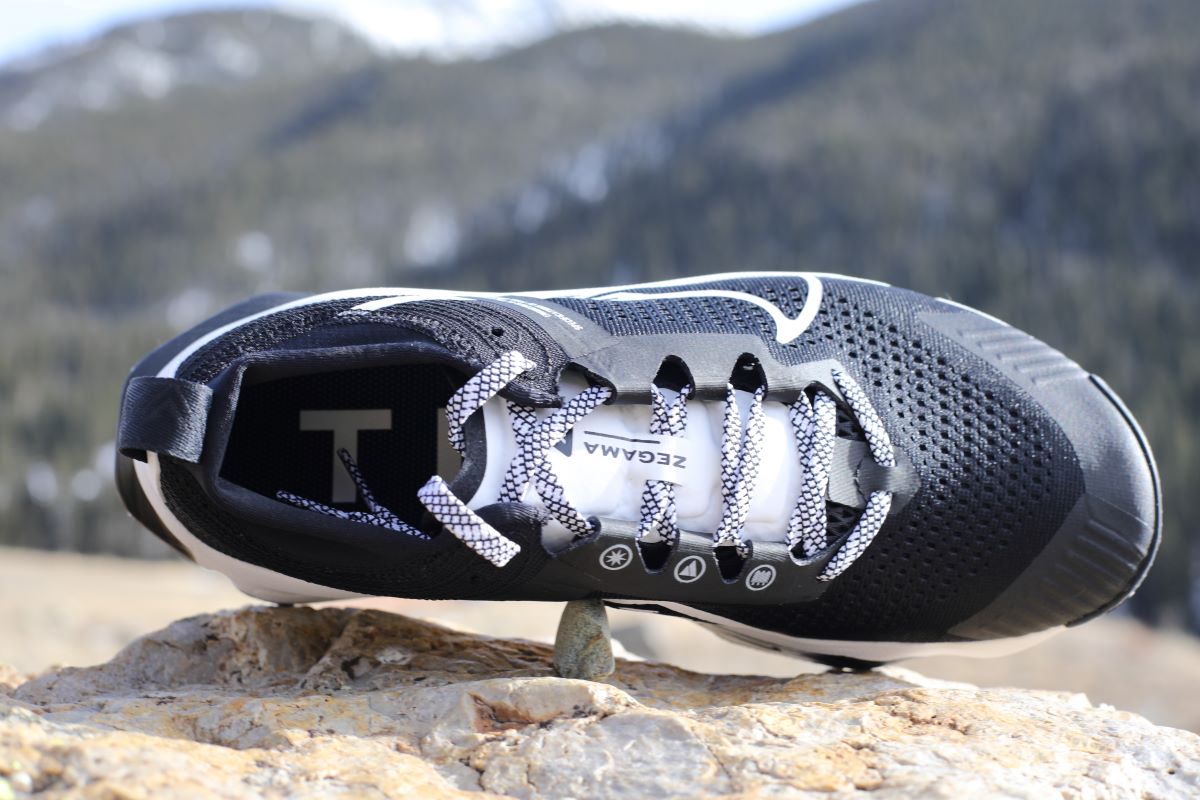For the latest on the Nike Zegama, you can read our Nike Zegama 2 review.
Our Favorite Trail Running Shoes
Check out our Best Trail Running Shoes article to learn about our current favorite trail running shoes!
Nike ZoomX Zegama Review
As a tester and general shoe geek, I have a long list of shoes in my Strava gear list. For each run, the shoe I wear gets assigned in order to track mileage and keep notes. While I rotate a lot, inevitably one standout shoe will get worn so many consecutive days that I’ll change it to my default, so that Strava will automatically assign it to my run.
This fall, the Nike ZoomX Zegama ($160) has taken over as my default shoe. Before that, the default was the Hoka Tecton X, another excellent shoe and the one I ran probably 90% of my runs in over the summer — see our in-depth Hoka Tecton X review. It’s a testament to the overall brilliance of this new addition to the Nike lineup, which continues a legacy of class-leading foam response, looks, and performance on any style of terrain.
There are a few legacy Nike trail running shoes at this point: the Pegasus Trail, the Wildhorse, and the Terra Kiger. While I only have two seasons of experience with the Pegasus Trail line, and none with the others, the ZoomX Zegama takes first for me in the lineup on its debut.
Shop the Men's Nike ZoomX ZegamaShop the Women's Nike ZoomX Zegama
Nike ZoomX Zegama Upper
The Nike ZoomX Zegama is not light — it has an actual weight of 10.2 ounces (290 grams) for a men’s size 9 — and much of that weight is attributed to its very durable upper. The strong engineered mesh provides excellent stability, but it has also provided extraordinary durability. As with many Nikes and due to my wide feet, the fit is narrow — although the ZoomX Zegama is in fact a little wider than other Nike shoes. This is meant to help with foot swelling over the longer distances and harder terrain for which it was designed.
I eked out a little more room by removing the insoles. This adds volume everywhere except in the heel area. This also makes the integrated ankle gaiter, which aims to keep out debris, a little less effective for me. More often than not, the extra looseness in the heel and ankle allows bothersome small stones, pine needles, and other trail detritus to sneak in.
Across the forefoot, there are very strong overlays that lend the upper an air of infallibility. There is hardly a nick or scuff that could develop into a hole with these overlays. The laces are strong and grippy, and the eyelets extend well over the top of your foot for a very secure lockdown.
With a nod to the super technical race from which this shoe gets its name, the Zegama Marathon in Basque Country, Spain, I intended to push this shoe to its limits over difficult descents. I found success on many hairball descents here in Boulder, Colorado, where I live, with the laces locked up to the highest eyelet, but found less confidence when skipping this most locked-in setting for more comfort.
According to Strava, I’ve run 121 miles in the ZoomX Zegama. The only terrain I haven’t tested the shoe in is talus, which because of the season, I can’t really access here in Colorado. But through mud, snow, sand, and gravel, the upper remains unblemished, comfortable, and super supportive.
Nike ZoomX Zegama Midsole
The midsole of the Nike ZoomX Zegama uses Nike’s ZoomX foam. If you’ve been following “super shoe” technology in road running, then you will have heard of Nike’s ZoomX foam. The foam first appeared in the Nike Zoom VaporFly 4%, the shoe in which Eliud Kipchoge ran 2:00:25 for a supported marathon, as part of the Breaking2 marketing project.
The foam, Nike says, delivers supreme energy return. Kipchoge then broke the sub-two-hour barrier in another supported marathon, creating a storm of dialogue around the advantages created by ZoomX foam and other incredible technologies. Its use — via ZoomX by Nike and similar offerings from the rest of the major road shoe brands — is now completely standard among the world’s best.
This mechanical advantage has even led to a discussion around times, pre- and post-super shoe development — that is, should times be recognized separately? No matter what side you take on the issue, there’s no denying how fun it is to make use of this technology. The ZoomX Zegama is the first Nike trail shoe to use ZoomX foam, but it’s not exactly the road shoes’ facsimile.
This shoe uses a single layer of high-performance ZoomX foam in just the heel and forefoot. The rest of the midsole is composed of Phylon foam, or a carrier foam that Nike says is meant to bulk up the center for absorbing uneven surfaces. This is logical considering the predictability of roads versus what we find on the trails.
Initially, I was quite apprehensive to bomb down technical descents in this squishy, high-stack shoe. The drop is 4 millimeters — the heel has a stack height of 37 millimeters and the toe has 33 millimeters — and I would advise you to spend time getting used to how the shoe lands before pushing it.
As you learn how this shoe rolls and flows on descents, the payoff becomes evident. You get perfect rebound and the confidence to really stomp down on the trail and take big, heavy leaps, because the foam is very forgiving and plush. It does help to make sure your foot is securely laced to avoid the potential for ankle rolls.
Nike ZoomX Zegama Outsole
Despite Nike annually offering a shoe in the Pegasus Trail line with a Gore-Tex version, many runners would say that no Nike trail shoe belongs in conditions that require protection from rain or snow, as the outsole traction historically has been so poor. But with the new Nike ZoomX Zegama, it’s my experience that Nike puts this slippery-when-wet reputation to bed. The outsole has been very reliable and sticky through more than 120 miles of testing, during this cold and snowy fall in Colorado, even at race pace.
Our shaded and north-facing trails in Boulder essentially become iced over for the duration of the winter after the first couple of snowstorms, but this hasn’t had an unfavorable effect on my runs in the shoe. Perhaps listening to users’ feedback, Nike has designed an all-new lug configuration for the shoe, intended to enhance uphill propulsion and downhill braking.
The 4-millimeter lugs are built-in directional chevrons and an increased amount of rubber covers the heel and forefoot areas. The midfoot section is lug-free to keep the weight down. The lug pattern even does a good job shedding mud in the notoriously wet Basque Country where the Zegama Marathon takes place. This is a real highlight.
Nike ZoomX Zegama Overall Impressions
The Nike ZoomX Zegama is a solid addition to Nike’s various trail running shoe lines. Using a burly upper, super-shoe midsole foam technology borrowed from its road shoes, and a well-developed outsole, Nike offers trail runners who like to go fast in technical terrain a high-performing option. While you’re getting a fairly heavy package, the technologies included in the Nike ZoomX Zegama more than make up for that extra bulk.
I predict I’ll be running in the Nike ZoomX Zegama long after more current shoes in my testing rotation. And I won’t hesitate to continue using them on all kinds of terrain, be it technical or easy. With a little practice, you should find the confidence to go all out on steep, technical descents. And on the rolling or uphill, you’ll love the exquisite energy transfer from the ZoomX foam.
Shop the Men's Nike ZoomX ZegamaShop the Women's Nike ZoomX Zegama
Call for Comments
- Have you run in the Nike ZoomX Zegama? How did they work for you?
- What are your favorite Nike trail shoes?
[Editor’s Note: If you’re affiliated (i.e., an employee, ambassador, etc.) with a brand, please share your relation in each of your comments on this article. Thanks!]
Our Favorite Trail Running Shoes
Check out our Best Trail Running Shoes article to learn about our current favorite trail running shoes!





